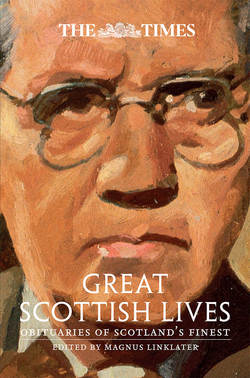Читать книгу The Times Great Scottish Lives: Obituaries of Scotland’s Finest - Magnus Linklater, Magnus Linklater - Страница 14
ОглавлениеDr. John Rae
Arctic explorer who uncovered the fate of the Franklin expedition
26 July 1893
By the death of Dr. John Rae we have lost one of the most striking personalities in the history of Arctic exploration and one of the few remaining men connected with the stirring episode of the search for Franklin. Though born in the Orkneys 80 years ago, until his last illness no more vigorous-looking or active man walked the streets of London. The hardships he endured during his many years’ work in the Arctic regions seemed to have made no impression upon his frame; his robust health, indeed, made him somewhat intolerant of others not gifted with his iron constitution. Dr. Rae was a man of a disposition at once generous and sensitive. Probably he was somewhat unjustly dealt with by the Admiralty, who in some editions of their Polar charts gave others the credit for what Rae had done. But Rae’s work as an Arctic explorer is too well known to be affected by any mistake of this kind. When he returned to England in 1854, bringing with him many relics of the Franklin expedition in the Erebus and Terror, and conclusively proving that the worst fate had overtaken its members, he received the reward of £10,000 which had been offered by Government. The Royal Geographical Society showed its estimate of what Rae had accomplished by awarding him its gold medal (1852).
When Rae was a youth of 16 he went to Edinburgh to study medicine. In 1833, having obtained his surgeon’s diploma, he was appointed surgeon to the Hudson’s Bay Company’s ship which annually visited Moose Factory, on the shores of Hudson’s Bay. His interest in the Arctic regions and in Arctic exploration was soon aroused. His first expedition was undertaken in 1846, when he succeeded in laying down 700 miles of now coast on the northern mainland of America, uniting the surveys of Ross on Boothia with Parry’s in Fury and Hecla Strait. In 1848, in company with Sir John Richardson, Rae undertook one of the earliest expeditions sent out to search for the missing Franklin expedition. In that and the following year all the coast between the Mackenzie and the Coppermine rivers was searched in vain. In 1850 Rae was sent out in command of another search expedition, and between that and 1854 he examined the whole of Wollaston Land, all the coast east of the Coppermine river; Victoria Land, and Victoria Strait. In this time Rae travelled in all some 5,300 miles, a considerable proportion of it being new country, and much of the travelling being done on foot. In 1853 Rae was once more in the Arctic at the head of an expedition which connected the surveys of Ross with that of Dease and Simpson and proved King William’s Land to be an island. It was on the last journey that Rae was able to collect evidence which showed that not only were the Erebus and Terror lost, but that in all probability every member of the Franklin expedition had perished. Though Lady Franklin continued the search for some years longer, Government took no further part in a search which most people were convinced would be in vain. During the nine or ten years’ work of Dr. Rae he was able to lay down some 1,500, if not 1,800, miles of previously unexplored ground. Even if the deductions which some of his enemies would make were allowed, it is evident that Rae did original work enough to entitle his name to occupy a high and permanent place in the history of Arctic exploration.
In 1860 Rae took part in surveying for a cable from England, by the Faeroes, Iceland, and Greenland, to America; and in 1864 he conducted a difficult telegraph survey from Winnipeg, across the Rocky Mountains. For the last 15 years Dr. Rae’s tall, lithe, muscular figure has been prominent at the meetings of the Geographical and other societies. He was a Fellow of the Royal Society and had been honoured by foreign scientific bodies. Dr. Rae was an ardent Volunteer, even in his later days, and an excellent shot. In 1850 he published a “Narrative of an Expedition to the Shores of the Arctic Sea in 1846 and 1847.” The accounts of the other work done by Rae will be found in the publications of the Royal Geographical Society and in official reports.
